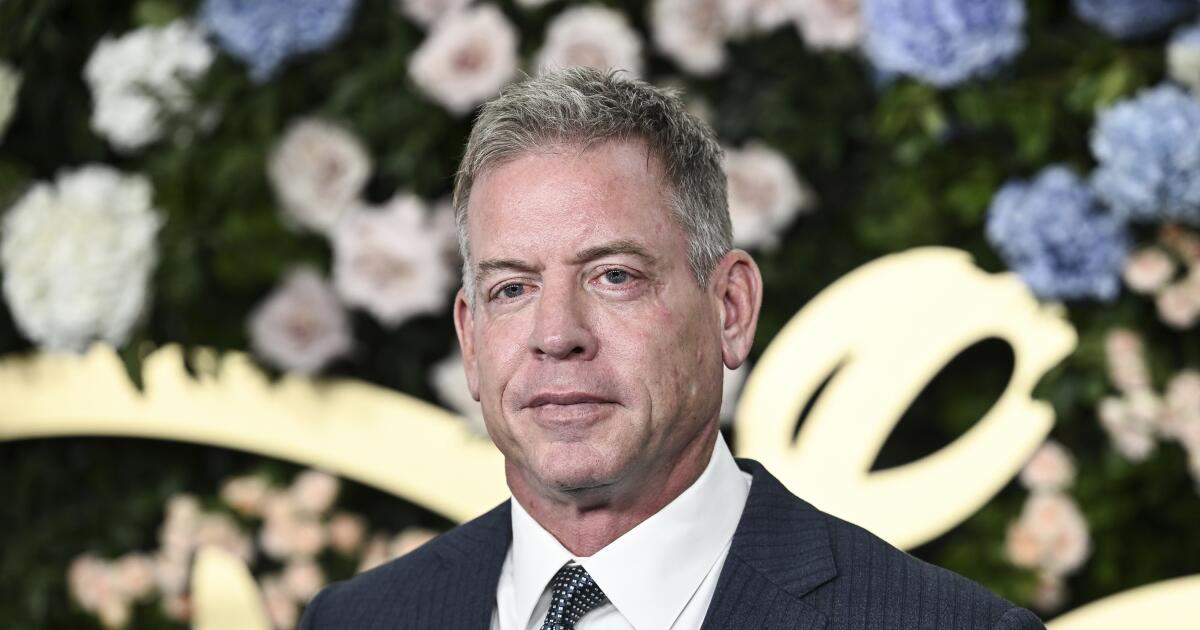Why Troy Aikman didn’t get thanked by that UCLA football player
Troy Aikman said he’s “done with NIL” after writing a check to a UCLA football player who never thanked him and went on to leave for another school after one season.
There was a reason for that lack of gratitude, according to one person familiar with the Bruins’ football name, image and likeness operations from that time not authorized to discuss donor information publicly.
The player in question didn’t know who funded his NIL deal, only that it was coming from the team’s collective, Men of Westwood. It was standard practice for players not to know which donors or alumni contributed NIL funds that were distributed to the team.
Aikman, who did not identify the player in his remarks, did receive thanks from Men of Westwood leadership, coach Chip Kelly and athletic director Martin Jarmond, according to the person familiar with the situation.
Aikman, the former UCLA quarterback who led the Bruins to a victory in the 1989 Cotton Bowl before going on to a Pro Football Hall of Fame career with the Dallas Cowboys, voiced his frustrations about NIL on the Sports Media Podcast with Richard Deitsch.
“I gave money to a kid, I won’t mention who,” Aikman told Deitsch. “I’ve done it one time at UCLA, never met the young man. He was there a year, he left after the year. I wrote a sizable check, and he went to another school. I didn’t even get so much as a thank-you note. So, it’s one of those deals, to where I’m done with NIL. I want to see UCLA be successful, but I’m done with it.”
Aikman went on to say he believed that players should be able to leave one school for another amid coaching turnover but should have to otherwise stay with the program paying them.
“There’s got to be some leadership at the very top that kind of cleans all of this up,” Aikman said. “Starting with players that accept money. There’s got to be some accountability and responsibility on their behalf, to have to stick to a program.”
